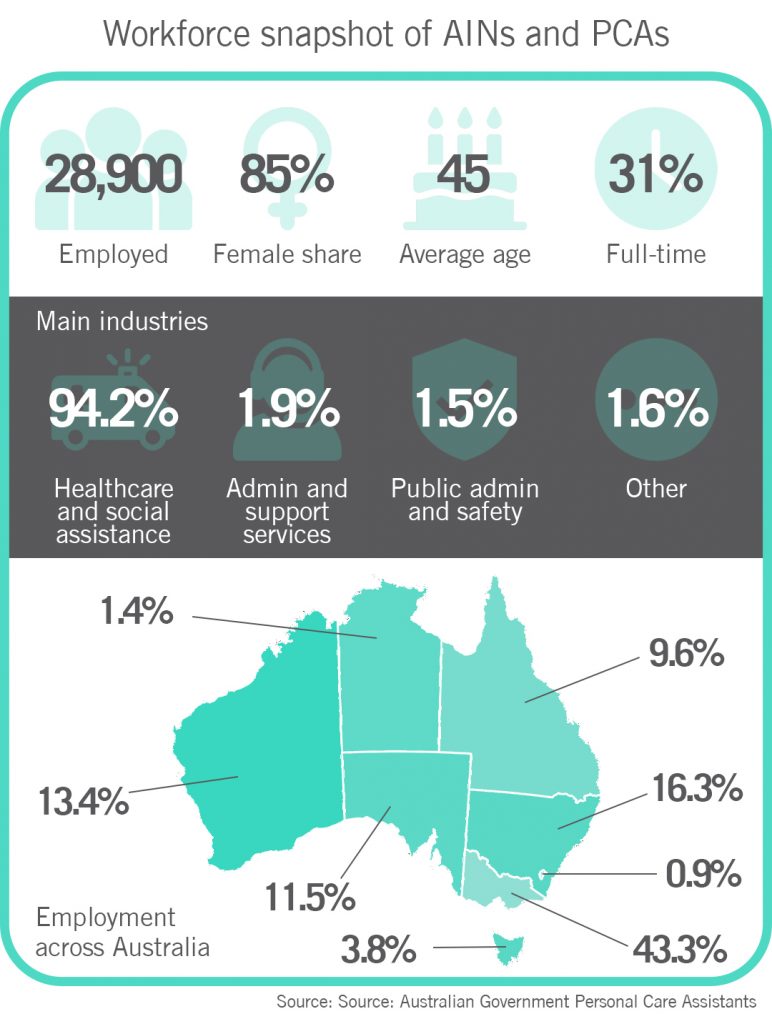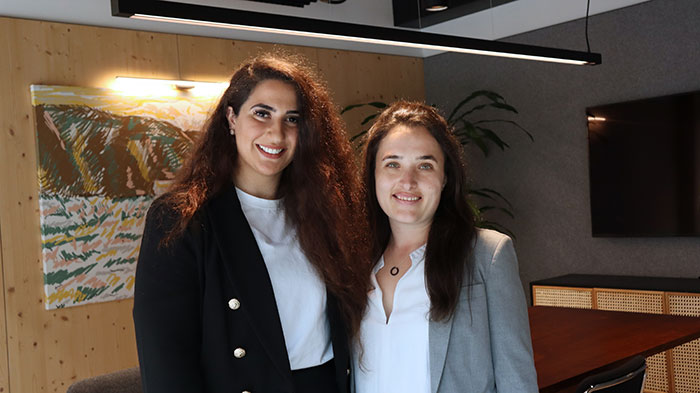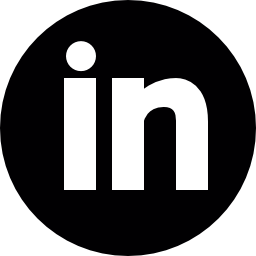Over the last decade, there have been numerous governmental enquiries into how Australia can better resource its healthcare and aged care industries. We’ve known for a long time that our country’s demand for nurses will exceed supply with a projected shortfall of approximately 85,000 nurses by 2025, or 123,000 nurses by 2030, under current settings. And, according to the Australian Bureau of Statistics, in 2020, the nursing profession was the largest occupational group in the healthcare and social assistance industry, representing around 29% of all workers.
Traditionally, Australia has structured its nursing workforce with two levels: registered nurses (RNs) who hold a Bachelor’s degree and enrolled nurses (ENs) who hold a Diploma. RNs practise independently and delegate care to ENs and other healthcare workers, including a rising number of assistants in nursing (AINs) and personal/patient care assistants (PCAs).
The need for assistants in nursing and patient care assistants
One of the recommendations to come out of a Senate Enquiry in 2016 was to create and increase support roles including AINs and PCAs. These terms and acronyms differ in meaning between agencies and health services; however, both provide nursing care in most healthcare settings including aged care facilities, private care in the community, and hospitals.
While the real size of the workforce is unknown, according to the Australian Government’s Aged Care Workforce Report 2016, in residential aged care, 70 per cent of the workforce were characterised as PCAs.
Over the last five years, the use of AINs and PCAs in the Australian healthcare sector is becoming increasingly prevalent, increasing the number of staff available to provide care, which can improve patient outcomes and reduce the workload of registered nurses and doctors.
AINs and PCAs are responsible for providing basic care to patients under the supervision of registered nurses and doctors. They support a healthcare team by:
- Assisting with patient personal care needs such as showering, dressing, eating, mobility, and communication.
- Participating in care planning.
- Following therapy plans i.e. interventions to assist those with dementia and behavioural problems.
- Observing and reporting changes in a patient’s condition.
- Reporting complaints about care.
- Assisting with rehabilitation exercises, basic treatment and delivery of medications.

What qualifications do AINs and PCAs hold?
One of the benefits of the healthcare sector is that workers don’t need to have completed a tertiary degree to enter the workforce. If someone has a passion for helping people, and an ability to work under pressure, they can offer a lot of value to employers. Qualifications and requirements vary depending on the organisation, state and setting. However, AINs or PCAs typically hold:
- A high school diploma or equivalent. Some have also completed a vocational training program or have a Certificate III in Health Service Assistance.
- Training in basic patient care, infection control, and other relevant topics.
- Basic Life Support (BLS) or Cardiopulmonary Resuscitation (CPR) certification.
- Police Check and Working with Children Check.
- Immunisations.
When we work with healthcare support talent, we also look for soft skills including communication, empathy, flexibility, adaptability, emotional intelligence, proactiveness, work ethic, and time management.
Benefits of recruiting AINs and PCAs
Our clients always want to ensure that their healthcare team is made up of people who are appropriately trained and supervised to increase safety standards and quality of care for patients. And often it’s about having enough people on the ground to provide the right level of care. That’s where hiring AINs and PCAs into your team can help. Your organisation can benefit in several ways, including:
- Increased patient care: Diversifying and increasing your health workforce places the right people with the right skills in the right place for improved patient care and outcomes.
- Reduced workload for registered nurses and doctors: AINs and PCAs can take on some of the responsibilities of registered nurses and doctors, which can reduce their workload and allow them to focus on more complex tasks.
- Cost savings: As I’ve covered above, because AINs and PCAs typically have a lower level of education and training than registered nurses and doctors, your organisation can benefit from cost savings.
- Flexibility: AINs and PCAs can be used in various healthcare settings, including hospitals, nursing homes, and home healthcare. This allows healthcare organisations to adapt to changing patient needs and demands.
- Longevity: Because AINs and PCAs are less in demand than enrolled and registered nurses, they may stay in their role for longer and give your team more stability.
- Job creation: Hiring AINs and PCAs creates jobs and can provide career opportunities for people looking to enter the healthcare field, as well as providing pathways for nurses.
Want to bolster your team with AINs and PCAs?
The team at Limelight People has access to a broad network of health talent all around Australia, skilled recruiters who specialise in the healthcare industry, and a successful track record of placing experienced talent into AIN and PCA positions.
If we can help to strengthen your healthcare workforce, please get in touch by emailing Cassia or Sam at jobs@limelightpeople.com.au








